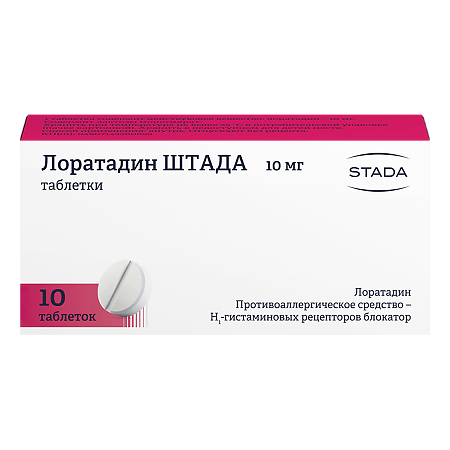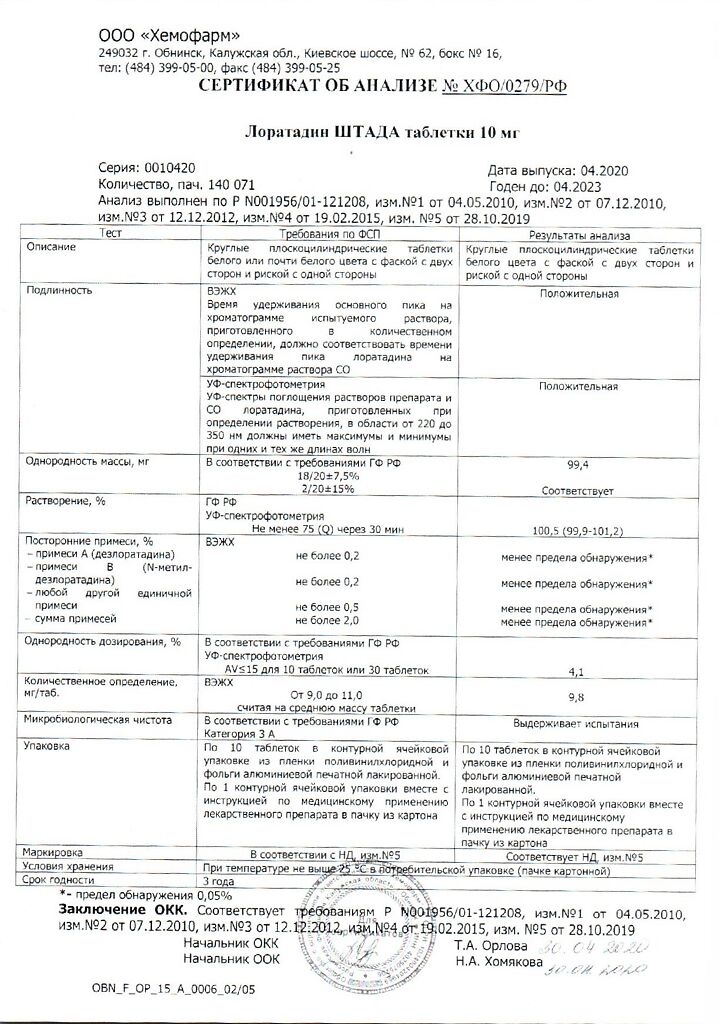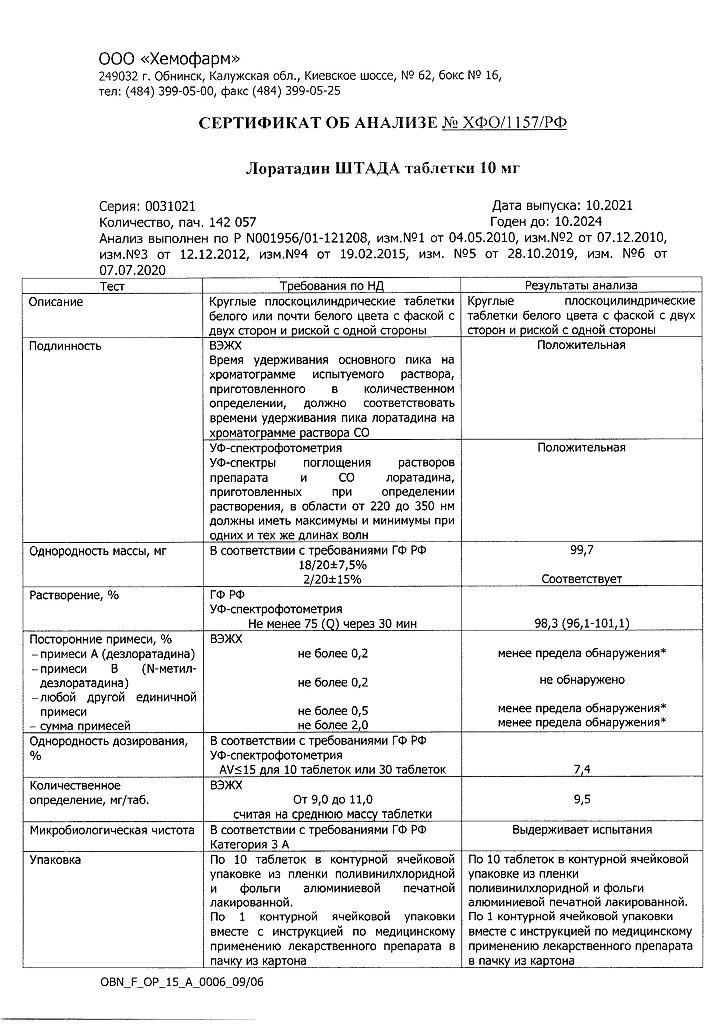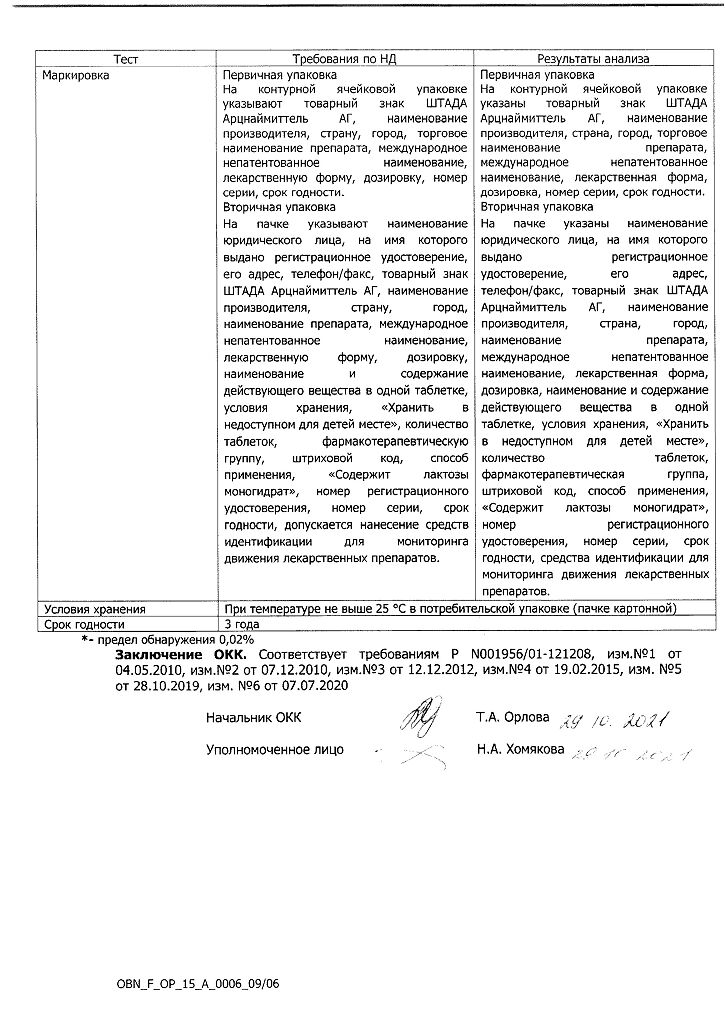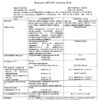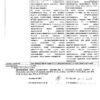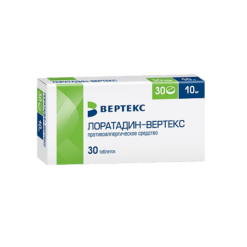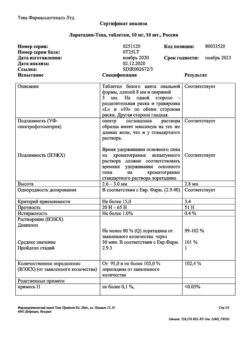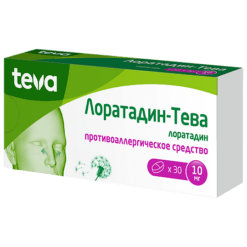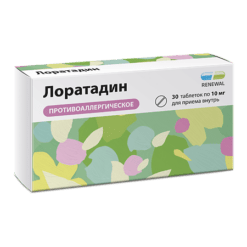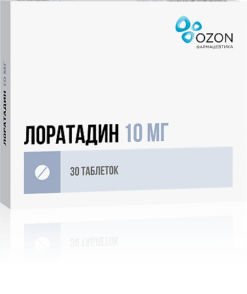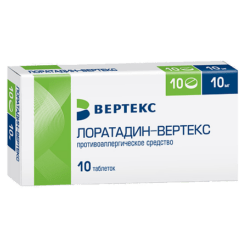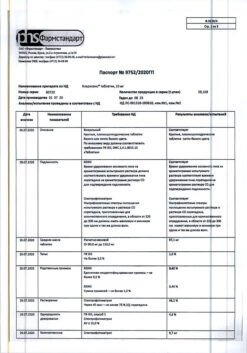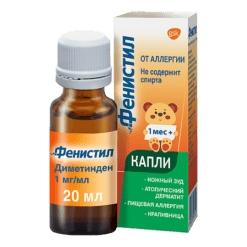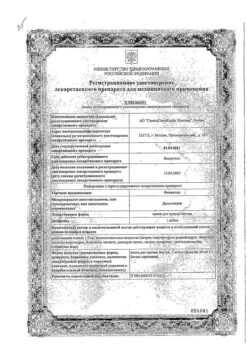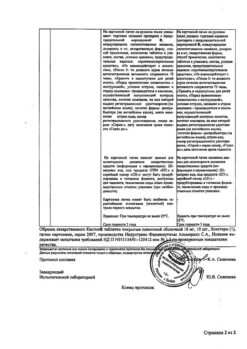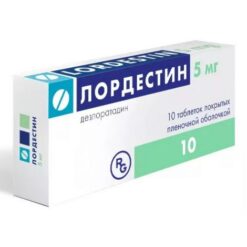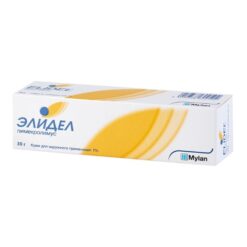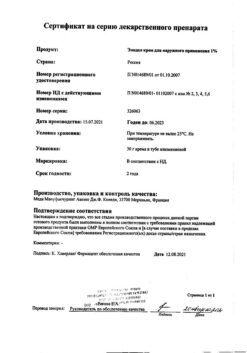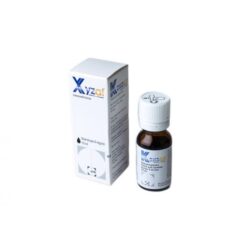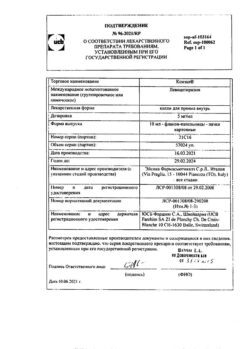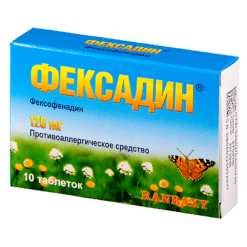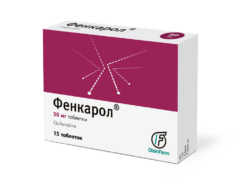No products in the cart.
Description
Loratadine is a blocker of H1-histamine receptors (long-acting).
Inhibits release of histamine and leukotriene C4 from mast cells.
Prevent development and ease the course of allergic reactions.
It has antihistamine, anti-allergic, antipruritic and antiexudative action.
Limits capillary permeability, prevents development of tissue edema, relieves smooth muscle spasm.
The anti-allergic effect develops within 30 minutes, reaches its maximum after 8-12 hours and lasts for 24 hours.
It does not affect the central nervous system and is not addictive (as it does not penetrate through the blood-brain barrier).
Pharmacokinetics
It is quickly and completely absorbed in the gastrointestinal tract.
The time to reach maximum concentration is 1.3-2.5 h; food intake slows it down by 1 h. Maximum concentration in the elderly is increased by 50%, with alcoholic liver damage depending on the severity of the disease.
The binding to plasma proteins is 97%. Metabolized in the liver with the formation of the active metabolite descarboethoxyloratadine with the participation of cytochrome P450 isoenzymes, CYP3A4 and to a lesser extent CYP2D6.
The equilibrium concentration of loratadine and the metabolite in plasma is reached on day 5 of administration. It does not penetrate the blood-brain barrier.
The elimination half-life of loratadine is 3-20 h (mean 8.4), of active metabolite – 8.8-92 h (mean 28 h); in elderly patients – respectively 6.7-37 h (mean 18.2 h) and 11-38 h (17.5 h).
In alcoholic liver damage the half-life increases depending on the severity of the disease. It is excreted by the kidneys and with the bile.
In patients with chronic renal insufficiency and with hemodialysis the pharmacokinetics is practically unchanged.
Indications
Indications
Seasonal and year-round allergic rhinitis, conjunctivitis, hay fever, urticaria (including chronic idiopathic), Quincke’s edema, allergic itchy dermatoses; pseudoallergic reactions, allergic reactions to insect bites, itching of various etiologies.
Pharmacological effect
Pharmacological effect
Loratadine is a H1-histamine receptor blocker (long-acting).
Inhibits the release of histamine and leukotriene C4 from mast cells.
Prevents the development and facilitates the course of allergic reactions.
It has antihistamine, antiallergic, antipruritic and antiexudative effects.
Reduces capillary permeability, prevents the development of tissue edema, relieves spasm of smooth muscles.
The antiallergic effect develops after 30 minutes, reaches a maximum after 8-12 hours and lasts 24 hours.
Does not affect the central nervous system and is not addictive (because it does not penetrate the blood-brain barrier).
Pharmacokinetics
Quickly and completely absorbed from the gastrointestinal tract.
Time to reach maximum concentration – 1.3-2.5 hours; food intake slows it down by 1 hour. The maximum concentration in elderly people increases by 50%, with alcoholic liver damage, depending on the severity of the disease.
Connection with plasma proteins – 97%. Metabolized in the liver to form the active metabolite descarboethoxyloratadine with the participation of cytochrome P450 isoenzymes, CYP3A4 and, to a lesser extent, CYP2D6.
The equilibrium concentration of loratadine and metabolite in plasma is achieved on the 5th day of administration. Does not penetrate the blood-brain barrier.
The half-life of loratadine is 3-20 hours (average 8.4), the active metabolite is 8.8-92 hours (average 28 hours); in elderly patients, respectively – 6.7-37 hours (average 18.2 hours) and 11-38 hours (17.5 hours).
In alcoholic liver damage, the half-life increases depending on the severity of the disease. Excreted by the kidneys and bile.
In patients with chronic renal failure and during hemodialysis, the pharmacokinetics remain virtually unchanged.
Special instructions
Special instructions
Loratadine should be discontinued 48 hours before skin testing because antihistamines may interfere with diagnostic test results.
Impact on the ability to drive vehicles. Wed and fur.:
There was no negative effect of loratadine on the ability to drive a car or perform other activities requiring increased concentration.
However, in very rare cases, some patients experience drowsiness while taking loratadine, which may affect their ability to drive or operate machines.
Active ingredient
Active ingredient
Loratadine
Composition
Composition
Active ingredient:
Loratadine 10 mg;
Excipients:
Lactose (milk sugar) – 77.5 mg,
Calcium stearate – 1.0 mg,
Potato starch – 10.0 mg,
Croscarmellose sodium (primellose) – 1.5 mg
Pregnancy
Pregnancy
Use is possible only if the expected benefit to the mother outweighs the potential risk to the fetus.
Loratadine is excreted in breast milk. If there is a need for use during lactation, breastfeeding should be discontinued.
Contraindications
Contraindications
Hypersensitivity. Pregnancy, lactation period, children under 3 years of age.
With caution: liver failure.
Side Effects
Side Effects
The adverse events listed below occurred with an incidence of ≥2% with loratadine and approximately the same frequency as with placebo (“dummy”).
In adults: headache, fatigue, dry mouth, drowsiness, gastrointestinal disorders (nausea, gastritis), as well as allergic reactions in the form of a rash.
In addition, there have been rare reports of anaphylaxis, alopecia, liver dysfunction, palpitations, and tachycardia.
Rarely in children: headache, nervousness, sedation.
Interaction
Interaction
Ethanol reduces the effectiveness of loratadine.
Erythromycin, cimetidine, ketoconazole, when used together with loratadine, increase the concentration of loratadine in the blood plasma without causing clinical manifestations or affecting the ECG.
Inducers of microsomal oxidation (phenytoin, barbiturates, zixorin, rifampicin, phenylbutazone, tricyclic antidepressants) reduce the effectiveness of loratadine.
Overdose
Overdose
Symptoms: drowsiness, tachycardia, headache. In case of overdose, consult a doctor.
Treatment: induction of vomiting, gastric lavage, intake of activated charcoal.
Specifications
Specifications
Tablets of white or almost white color, flat-cylindrical in shape with a chamfer and a score.
Prescribing
Prescribing
Antiallergic agent – H1-histamine receptor blocker
Complete set of goods
Complete set of goods
Tablets 10 mg. 7 or 10 tablets in blister packs made of polyvinyl chloride film and printed varnished aluminum foil.
1, 2 or 3 strip packaging along with instructions for use in a cardboard pack.
Storage conditions
Storage conditions
In a dry place, protected from light, at a temperature not exceeding 25 ° C.
Keep out of the reach of children.
Shelf life
Shelf life
3 years. Do not use after the expiration date indicated on the package.
Manufacturer
Manufacturer
Hemofarm LLC, Russia
Additional information
| Shelf life | 3 years. Do not use later than indicated on the package. |
|---|---|
| Conditions of storage | In a dry, light-protected place at a temperature no higher than 25 ° C. Keep out of reach of children. |
| Manufacturer | Chemopharm LLC, Russia |
| Medication form | pills |
| Brand | Chemopharm LLC |
Other forms…
Related products
Buy Loratadine, tablets 10 mg 10 pcs with delivery to USA, UK, Europe and over 120 other countries.

